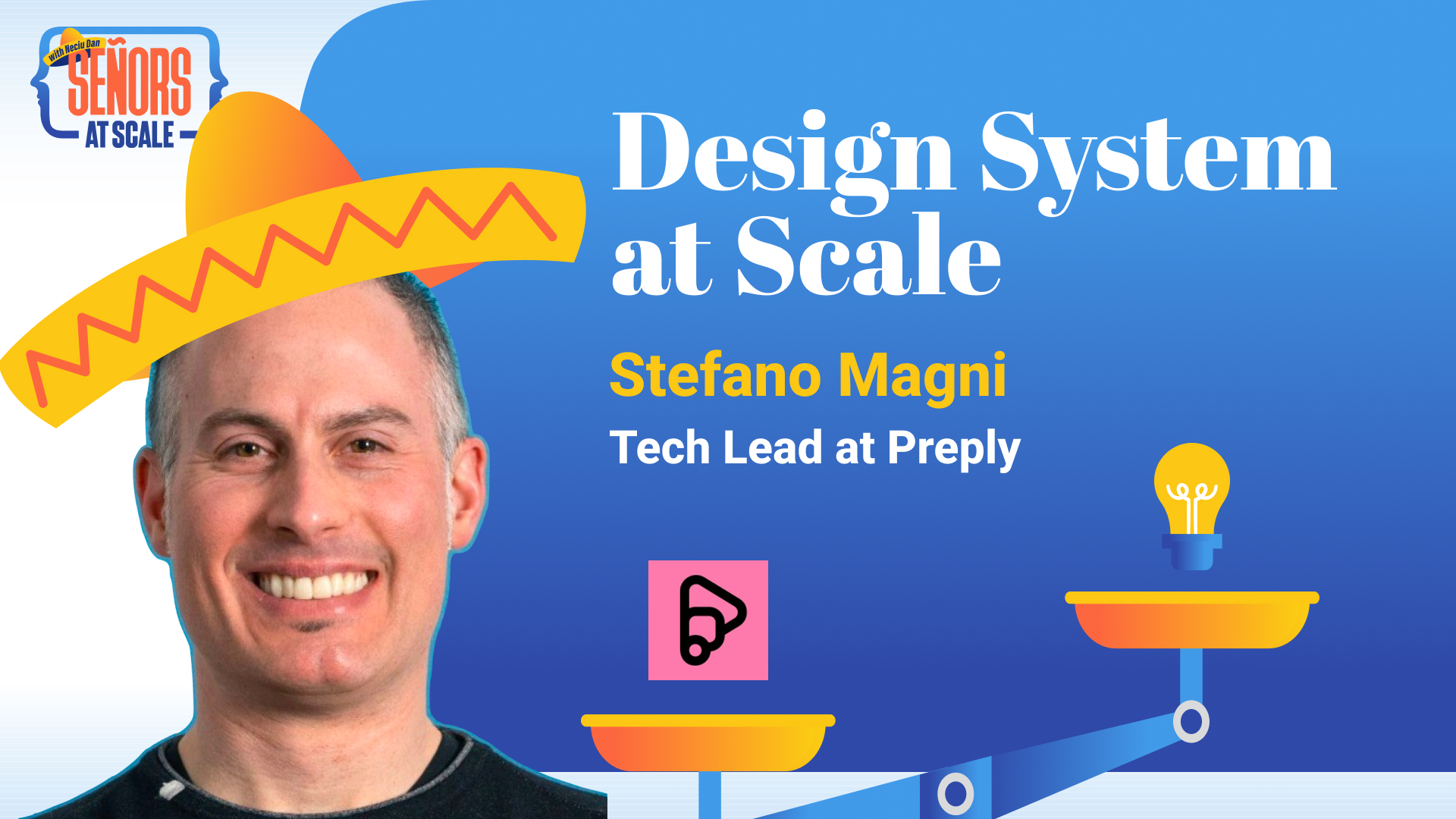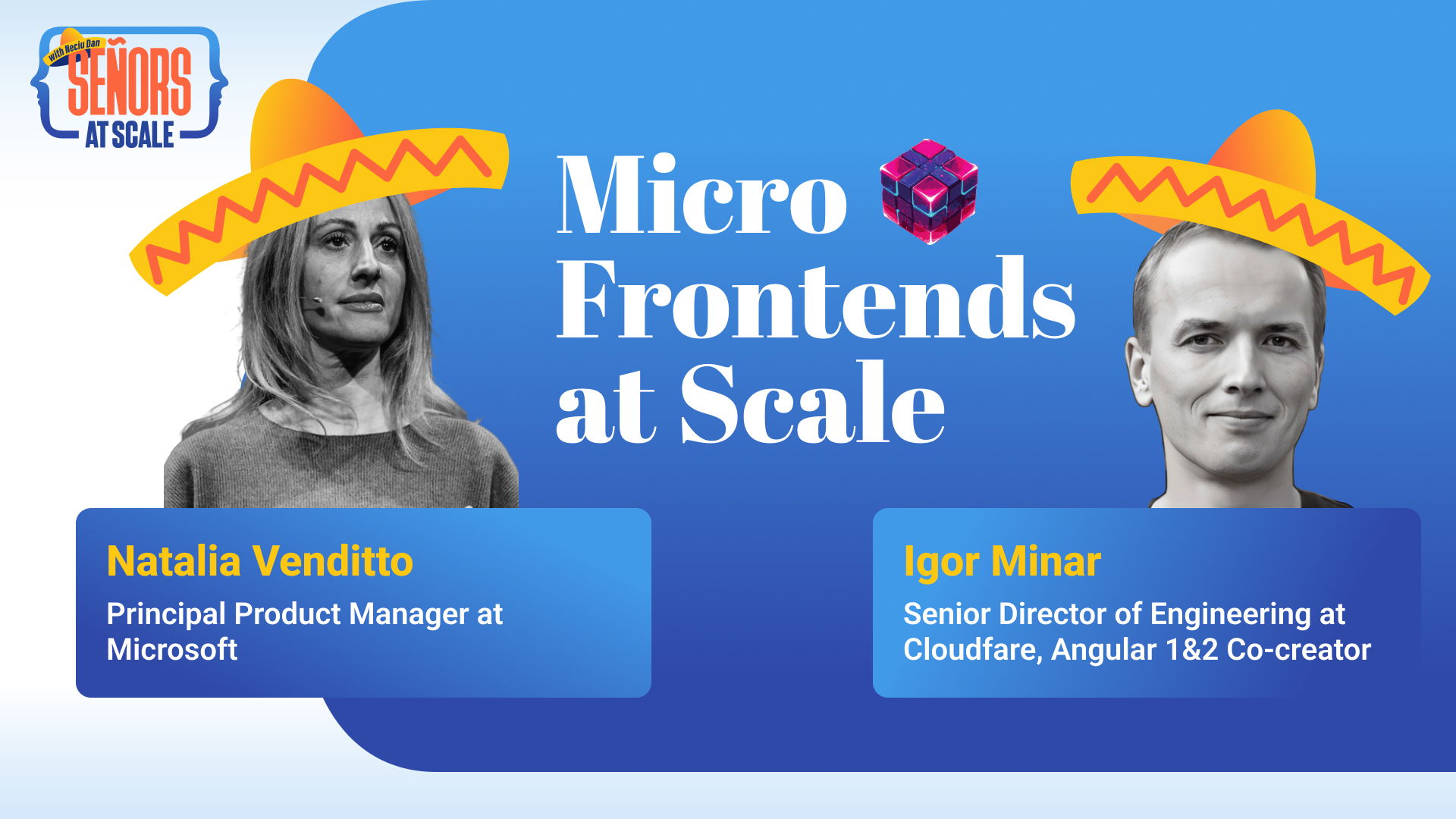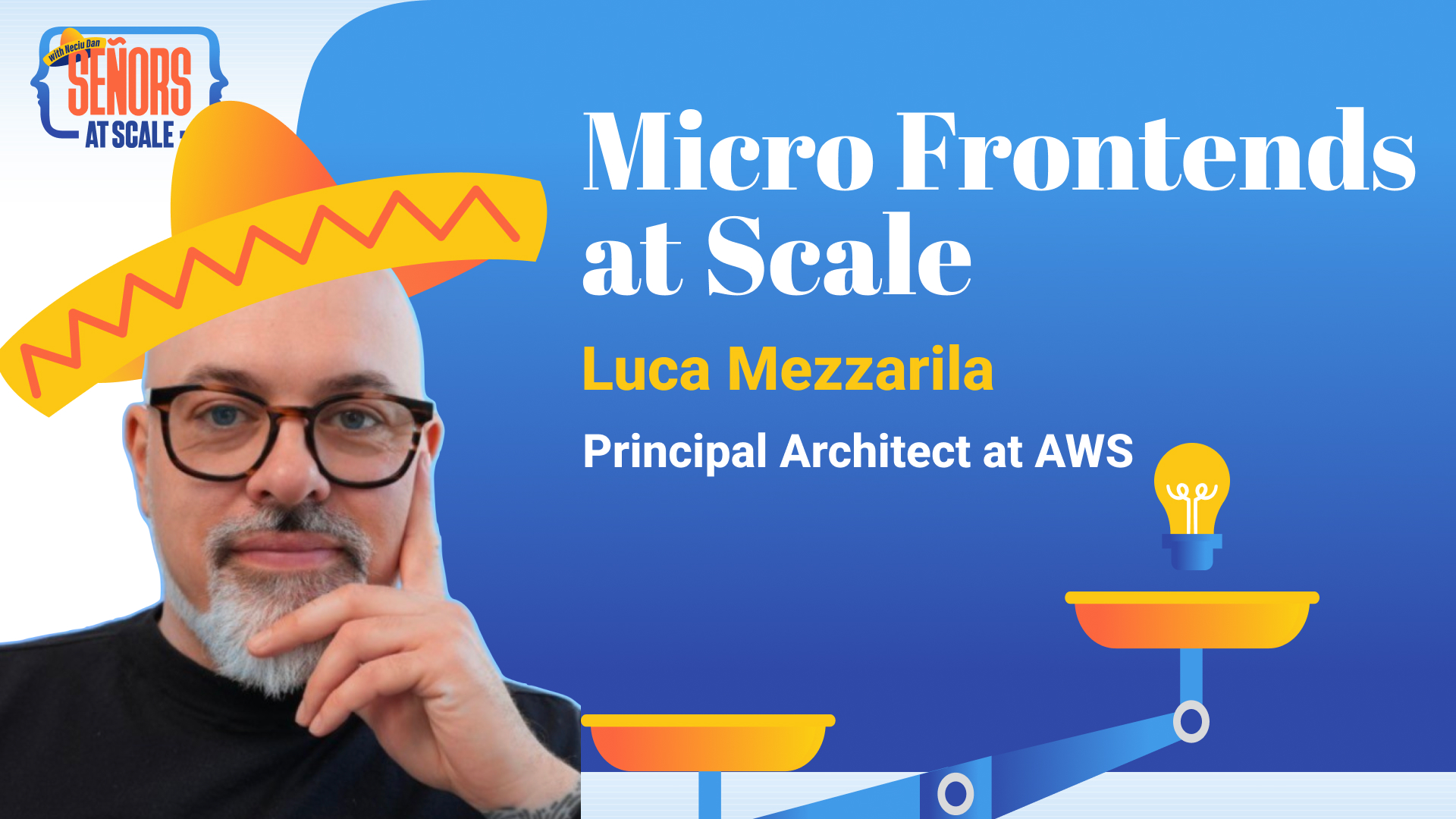Luca Mezzalira
Principal Serverless Specialist at AWS & Author of Building Micro-Frontends (O’Reilly)
Señors @ Scale host Neciu Dan sits down with Luca Mezzalira, Principal Serverless Specialist at AWS and author of *Building Micro-Frontends*, to unpack how he helped scale DAZN’s frontend from 2 developers to 500 engineers across 40 devices. Luca shares the origin of micro-frontends, how to build stable application shells, implement zero global state, use guardrails for bundle budgets, and manage migrations at scale through edge routing and team autonomy.
🎧 New Señors @ Scale Episode
This week, I spoke with Luca Mezzalira, Principal Serverless Specialist at AWS and author of Building Micro-Frontends (O’Reilly), about what real micro-frontends look like in production — and how to scale them safely across hundreds of engineers.
Luca originally coined and implemented the concept years before it had a name, while scaling DAZN’s live sports platform from 2 developers to 500 engineers working across 40 devices.
What started as an experiment became the foundation for a global pattern in frontend architecture.
⚙️ Main Takeaways
1. Micro-frontends were born out of necessity.
With DAZN expanding globally, Luca needed a way to parallelize frontend development across teams without dependency hell. Micro-frontends became the natural evolution.
2. The app shell was framework-free.
The DAZN shell was written in vanilla JS for stability. It handled only routing and device config — no shared state, no external dependencies, no framework coupling.
3. Zero global state is the rule, not the dream.
Each micro-frontend owned its own MobX store. Global state was considered an anti-pattern that made testing and delivery unpredictable.
4. Guardrails keep complexity sane.
Every PR triggered a Lambda that built the bundle and enforced a size threshold. If the build exceeded 20%, the merge was blocked automatically.
5. Routing at the CDN edge changed everything.
Using edge routing and the strangler pattern, Luca’s team could ship new micro-frontends incrementally while safely falling back to the monolith if needed.
6. Monoliths still have their place.
Luca argues that you shouldn’t start with micro-frontends. Begin with a monolith, then evolve when scale, autonomy, and delivery speed demand it.
7. Team topology is as important as code.
Architecture must reflect social structure. Micro-frontends fail when governance and team alignment are ignored.
8. Friction is feedback.
When two micro-frontends always deploy together, it’s not a failure — it’s the architecture signaling that your boundaries are wrong.
9. A design system is essential glue.
Luca recommends automated tools like Dependabot to bump shared dependencies across micro-frontends nightly for consistent UX.
10. Migration should feel iterative, not heroic.
Incremental rollout, canary deployments, and strong platform ownership make micro-frontend adoption sustainable.
🧠 What I Learned
- Distributed frontends are more social than technical.
- The biggest scaling challenges are about communication, not code.
- Friction is diagnostic — it tells you what’s broken.
- Autonomy without governance is chaos.
- A stable shell and CI guardrails create the safety needed for speed.
💬 Favorite Quotes
“Every single decision we made was for the stability of the platform.”
“Global state is an anti-pattern — it gives you speed now and chaos later.”
“Friction isn’t failure. It’s your architecture telling you something’s wrong.”
“You don’t need to start with micro-frontends. You evolve into them.”
“The hardest part isn’t tech — it’s aligning teams to think the same way.”
🎯 Also in this Episode
- How DAZN booted its app 3x faster on low-end devices
- Implementing CI/CD guardrails with GitHub and AWS Lambda
- The socio-technical reality of scaling architecture
- Using edge routing for safe incremental migration
- Building design systems that stay in sync across teams
- The evolution of the Building Micro-Frontends O’Reilly book
Resources
More from Luca:
Blog
Book: Building Micro-Frontends (2nd Edition)
LinkedIn
🎧 Listen Now
🎧 Spotify
📺 YouTube
🍏 Apple Podcasts
Episode Length: 1h 10m on distributed architecture, scaling frontends, and enabling team autonomy at scale.
If you’re a frontend architect, platform engineer, or tech lead wrestling with scale — this one’s for you.
Happy scaling,
Dan
💡 More Recent Takeaways

Señors @ Scale host Neciu Dan sits down with Liran Tal, Director of Developer Advocacy at Snyk and GitHub Star, to unpack NPM malware, maintainer compromise, MCP attacks, toxic flows, and why AI-generated code is statistically insecure without the right guardrails. Liran shares real incidents from the Node and open source ecosystem, how Snyk and tools like NPQ help developers build safer workflows, and why security at scale starts with developers, not firewalls.

Señors @ Scale host Neciu Dan sits down with Stefano Magni, Senior Front-End Engineer and Tech Lead at Preply, to unpack what it takes to build and measure a design system for a global learning platform. From managing technical debt and accessibility to driving a culture of public work and data-driven engineering, Stefano shares lessons from 15+ years in frontend development.

Señors @ Scale host Neciu Dan sits down with Bruno Paulino, Tech Lead at N26, to explore what reliability really means in FinTech. From server-driven UIs and CI/CD pipelines to AI-assisted customer support and strict compliance, Bruno shares how N26 balances speed, safety, and developer experience to keep millions of users online.

Señors @ Scale host Neciu Dan talks with Microsoft’s Natalia Venditto and Cloudflare’s Igor Minar about WebFragments — a new micro-frontend model that isolates JavaScript and DOM at the browser boundary, enables instant SSR through fragment piercing, and lets large teams ship independently without dependency lockstep.
📻 Never Miss New Takeaways
Get notified when new episodes drop. Join our community of senior developers learning from real scaling stories.
💬 Share These Takeaways
Want More Insights Like This?
Subscribe to Señors @ Scale and never miss conversations with senior engineers sharing their scaling stories.
